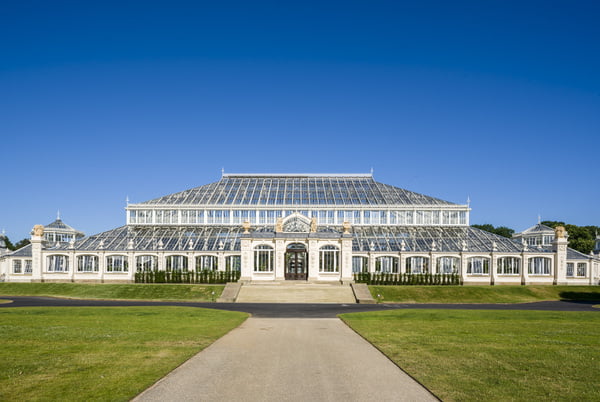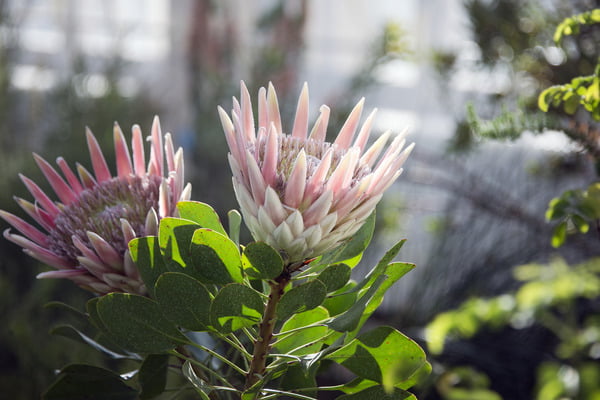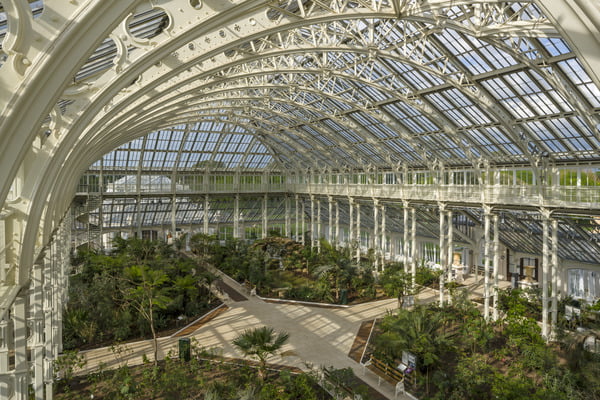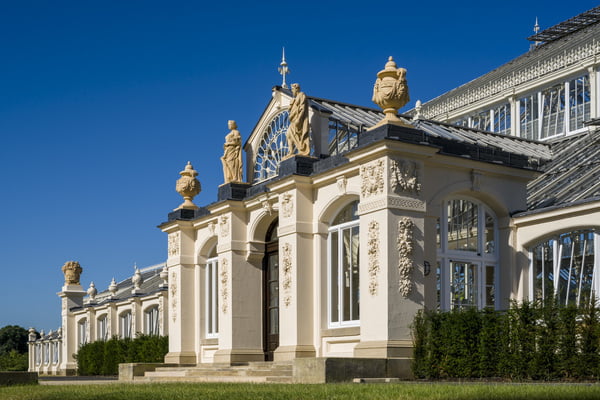What a summer we are having in London! The thermometer has sat in the high twenties for nearly a month now and there is no sign of rain. As an expat Australian working at the Royal Botanic Gardens, Kew, I’m enjoying the warmth after the bleak cold and snow of February – the only downside is that the Gardens could really do with a big drink.

The Temperate House. Image credit Gareth Gardner
I arrived at Kew in March 2017 to start a new role as Head of Interpretation. My first big project was to recruit and establish the team that would develop and deliver the stories within the refurbished Temperate House. After 18 years at the Royal Botanic Gardens Victoria, the chance to work at Kew on such an incredible project was too good an opportunity to pass up – a dream job for a storyteller.
With only a year to opening the Temperate House to the public, we needed to hit the ground running. The Temperate House contains many plants that are rare and threatened in the wild. Temperate plants exist at the very frontier of global change and are most threatened by human activity. The temperate world is where most of us live, where we build most of our cities and clear land for agriculture. The Temperate House has provided us with a space in which we can share stories about contemporary Kew science and the role of botanic gardens in the conservation of the world’s flora.
In the midst of this Melbourne style heatwave, it seems incongruous to be talking about ‘temperate climate’ plants. The Temperate House at Kew was first proposed in 1859 by Director William Hooker. At that time Kew’s plant hunters were still sending back to London temperate plants from Britain’s colonies: India, Australian, New Zealand and Africa. Hooker was concerned that these horticultural treasures would be lost to London frosts hence his proposal to construct a glasshouse to keep them safe.

Protea cynaroides
The architect Decimus Burton was engaged by Hooker to design the Temperate House. Burton had previously designed the ‘Great Stove’ glasshouse for Joseph Paxton at Chatsworth. The first section of the Temperate House opened to the public in 1863 though it took Kew another 40 years to open the full house due to difficulties in finding funding. The glasshouse that Burton created, new refurbished and returned to its 1863 glory, twinkles in the sunlight like a large Victorian jewellery box.

The central space is cathedral like. Image credit, Gareth Gardner
The central space feels like a cathedral with tall white columns and spandrels hanging in the air overhead. The light inside the glasshouse is white and clear and, in the warmth, the scented specimens that are planted close to each entrance perfume the air. The main entrance to the glasshouse is surmounted by two statues of one of Flora the goddess of flowers and the other, a larger than life-sized, Silvanus the god of trees – it truly is a temple to the flora of the temperate world.

Statues adorn the entrance
My favourite story is that of the Dombeya mauritiana. In 1994 the lone tree that survived on Mauritius died and the plant was considered extinct in the wild. Luckily a few cuttings taken from this plant survived in cultivation. Fifteen years later another wild survivor was found on Mauritius and staff from Kew were able to fight their way through a guava thicket to take more cuttings and propagate more plants. Bringing this plant back from the brink.
